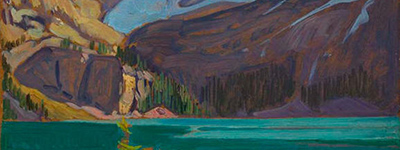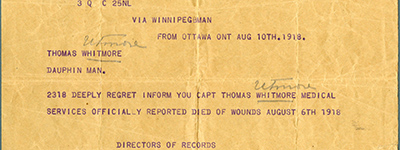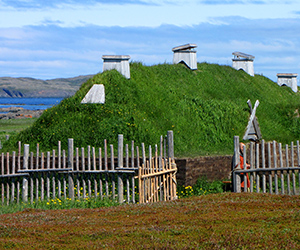CANADA HISTORY - Places-Settlements
Dawson City

Dawson City, located in the heart of the Yukon along the Yukon River, was the epicenter of one of the most famous gold rushes in world history: the Klondike Gold Rush of the late 1890s. The city’s meteoric rise from an uninhabited wilderness to the largest urban settlement in the Canadian North stands as a testament to the power of the gold rush to reshape the landscape and the lives of those who ventured there in search of wealth. This essay explores the origins of Dawson City, the events that led to its creation, and its preservation as a symbol of frontier society and Canadian heritage.
Origins of Dawson City
The discovery of gold in the Klondike region was the catalyst for the creation of Dawson City. In 1896, a prospector named George Carmack, along with his Indigenous companions Skookum Jim Mason and Dawson Charlie, discovered gold along the Klondike River, a tributary of the larger Yukon River. News of the strike spread rapidly, triggering a massive influx of prospectors and fortune-seekers from around the world. By 1897-1898, tens of thousands of prospectors, commonly referred to as "stampeders," converged on the area, driven by the allure of striking it rich.
The Klondike Gold Rush was not the first major gold rush in Canada; that distinction belongs to the Fraser River Gold Rush of 1858. However, it was the greatest in terms of global attention and impact. The rush to the Klondike rivaled the famed California Gold Rush of 1849, with newspapers around the world running stories of sudden wealth and fabulous fortunes. The promise of gold inspired men and women to make the perilous journey to the Klondike, traveling through the harsh and rugged wilderness of the Yukon to reach their destination.
At the heart of this surge of activity was Dawson City, established in 1896 at the confluence of the Klondike and Yukon Rivers. Named after Canadian geologist George Mercer Dawson, the town grew rapidly from a small settlement of tents and cabins into a bustling metropolis. By 1898, Dawson City had become the largest city in the Canadian North, with a population that swelled to over 30,000 at its peak.
The Boom of Dawson City
Dawson City during the height of the gold rush was a chaotic, vibrant place. The town's streets were filled with the sounds of pickaxes, mining equipment, and the constant flow of people and goods arriving by steamboat along the Yukon River. The sudden influx of wealth transformed the town into a frontier hub, complete with hotels, saloons, dance halls, and supply stores. Entrepreneurs and merchants made their fortunes catering to the needs of miners, selling everything from food and equipment to entertainment.
The gold rush also attracted a colorful mix of characters, each with their own ambitions and dreams. Prospectors, adventurers, gamblers, and entrepreneurs flocked to Dawson City, giving rise to a wealth of stories and legends that have since become part of Canadian folklore. One of the most famous chroniclers of the Klondike was Robert Service, the "Bard of the Yukon," whose poems, including The Shooting of Dan McGrew and The Cremation of Sam McGee, captured the romance and hardship of life in the goldfields.
Not all who came to Dawson City found success. For every prospector who struck it rich, there were many more who left the region with little or no gold. The difficulties of mining, the harsh weather, and the remote location made life in Dawson City challenging. Yet the town thrived as long as the gold continued to flow, and it became a symbol of both the possibilities and the perils of the North.
The Decline and Preservation of Dawson City
As with many gold rush towns, Dawson City's prosperity was short-lived. By the early 1900s, the gold in the Klondike region began to run out, and many prospectors moved on in search of new opportunities. The population of Dawson City dwindled as the boom gave way to bust. By the early 20th century, the town was a shadow of its former self, with only a few hundred residents remaining.
Despite its decline, Dawson City never completely faded away. The stories of the Klondike Gold Rush and the legends of the North continued to capture the imagination of writers, historians, and adventurers. Figures like Pierre Berton, the renowned Canadian author and historian, helped to keep the memory of Dawson City alive through his writings and advocacy for the preservation of its heritage. Berton, who grew up in Dawson City, would later write extensively about the gold rush and its impact on Canadian history.
In the mid-20th century, efforts were made to preserve Dawson City as a historic site. Recognizing its importance as a symbol of the Klondike Gold Rush and frontier society, Parks Canada undertook extensive restoration and preservation efforts. Today, Dawson City is maintained as a living museum, offering visitors the opportunity to step back in time and experience life as it was during the height of the gold rush.
The city retains many of its original structures, including the dance halls, saloons, and historic homes that once housed miners and adventurers. The town's wooden boardwalks and period architecture transport visitors to the days when Dawson City was the heart of the Yukon. Parks Canada's preservation efforts ensure that the legacy of the gold rush and the stories of those who lived through it continue to be shared with future generations.
Cultural and Historical Legacy
Dawson City's preservation goes beyond its physical structures; it is also a repository of stories, legends, and cultural heritage. The town is inextricably linked with the work of writers like Robert Service and Pierre Berton, whose poems and stories immortalized the spirit of the Klondike Gold Rush. These cultural contributions have cemented Dawson City’s place in Canadian history as a symbol of adventure, perseverance, and the human quest for wealth and opportunity.
In addition to its literary heritage, Dawson City is also home to numerous museums and interpretive centers that tell the story of the gold rush and the people who shaped it. The Dawson City Museum provides a comprehensive overview of the town's history, featuring exhibits on mining, the lives of early settlers, and the Indigenous peoples of the Yukon. The Klondike National Historic Sites, managed by Parks Canada, offer guided tours, re-enactments, and interactive displays that bring the past to life.
Dawson City’s cultural importance extends to its role as a symbol of Canada's frontier identity. The Klondike Gold Rush helped shape perceptions of the Canadian North as a place of untapped resources and boundless opportunity. It also contributed to the development of the Yukon as a territory, influencing the creation of infrastructure and governance in the region.
Dawson City is more than just a relic of the past; it is a living testament to the transformative power of the Klondike Gold Rush and the spirit of those who sought fortune in the frozen North. From its humble beginnings as a wilderness outpost to its status as the largest city in the Canadian North during the late 19th century, Dawson City played a pivotal role in shaping the history and identity of the Yukon and Canada as a whole.
Through the efforts of Parks Canada and other preservationists, Dawson City remains a place where visitors can explore the rich heritage of the gold rush era. It serves as a reminder of the challenges and triumphs of those who ventured into the unknown in search of wealth and adventure. As a center of frontier society and a hub of stories and legends, Dawson City continues to captivate the imagination of those who visit, ensuring that the legacy of the Klondike Gold Rush endures for generations to come.
Cite Article : Reference: www.canadahistory.com/sections/documents/documents.html
Source: NA



